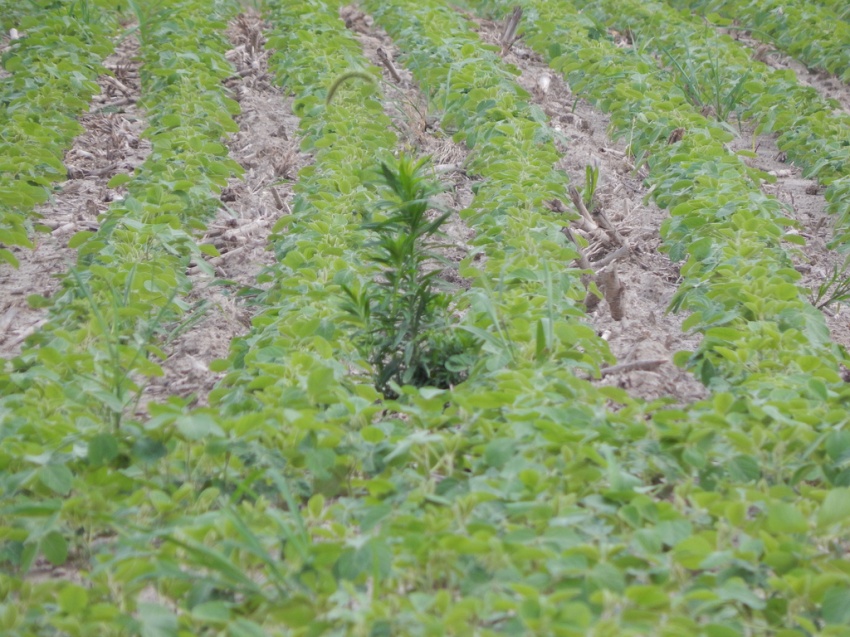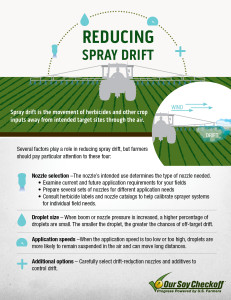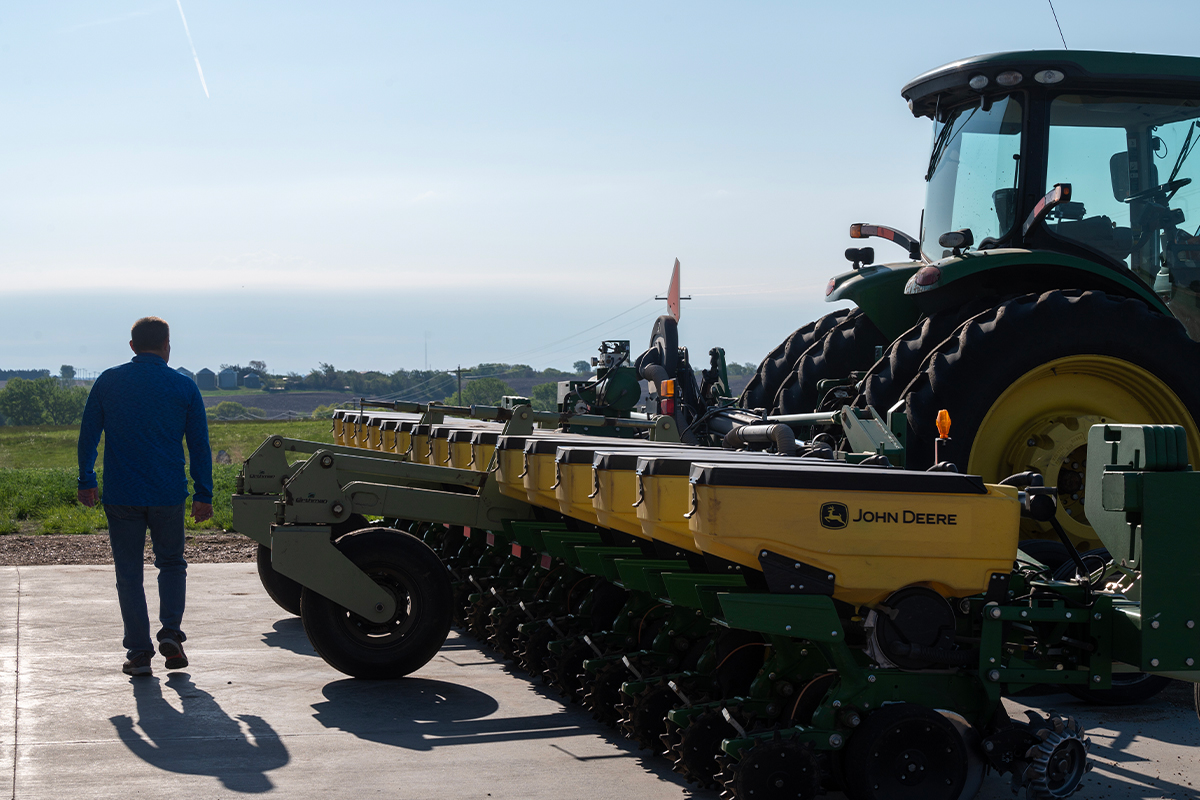On-Target Weed Control: Four Tips to Manage Spray Drift

With the increased prevalence of herbicide-resistant weeds, it’s important for farmers to diversify their weed-management plans to incorporate more modes and sites of action. Doing so also requires farmers to be more attentive in applying these herbicides.
 As farmers diversify the herbicides they use to battle resistant weeds, it’s critical that they also keep those herbicides from drifting into neighboring fields and potentially damaging sensitive crops.
As farmers diversify the herbicides they use to battle resistant weeds, it’s critical that they also keep those herbicides from drifting into neighboring fields and potentially damaging sensitive crops.
Spray drift, or the movement of herbicides and other crop inputs away from intended target sites through the air, has become a major concern. If a herbicide blows into a field of soybeans that haven’t been bred with resistance to that product, the unintended application could destroy the entire field, along with that farmer’s profits.
Several factors play a role in reducing spray drift, but Dan Reynolds, Ph.D., weed scientist at Mississippi State University, says farmers should pay particular attention to these four to manage spray drift:
- Nozzle selection. While selecting the right nozzle for the right application is a challenge, Reynolds calls it the most important factor in managing spray drift. The nozzle’s intended use determines the type of nozzle needed. Every farmer should examine current and future application requirements for their fields and be prepared to have several sets of nozzles ready for different application needs. Farmers also need to remember to consult their herbicide labels and nozzle catalogs to help calibrate sprayer systems for individual field needs.
- Droplet size. The smaller the droplet, the greater the chances of off-target drift. New technologies like nozzle improvements, spray tank additives, electronically-controlled sprayers and high-volume air-assisted sprayer systems can help farmers better control the size of droplets they spray. Reynolds says droplet size will help farmers choose the appropriate nozzle, but farmers will still have to determine the appropriate droplet size based on the application to minimize the risk of drift. “We haven’t been selecting nozzles on droplet size in the past as much, but now it’s important based on the sensitivity of crops to off-target deposition.”
- Application speeds. In the future, Reynolds says there will be more stringent enforcement by chemical companies on application speed restrictions. “When the speed is too low, that’s when droplets will be suspended in air and move for long distances. When speeds are too fast, physical drift to another area can occur.”
- Multiple practices. Reynolds says a diverse set of practices, like drift-reduction nozzles or deposition-agent additives, are good at reducing the potential for spray drift, but only if they are chosen selectively. “This transition will not be a simple thing. A good drift-management plan will include multiple strategies,” he explained. “One practice alone does not make for a good plan.”



